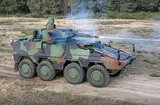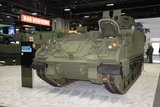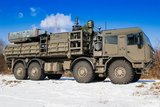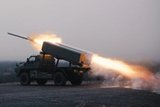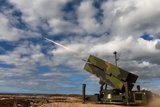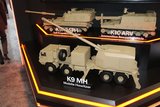DARPA kicks off Transformer (TX) program
To meet much of transportation needs of today's deployed Warfighter, either highly mobile multipurpose wheeled vehicles (HMMWV) are used, or helicopters, which have limited availability, are used. DARPA's Transformer (TX) program seeks to combine the advantages of ground vehicles and helicopters into a single vehicle equipped with flexibility of movement. The concept is to provide options to avoid traditional and asymmetrical threats while avoiding road obstructions.
With this type technology, transportation will no longer be restricted to trafficable terrain that tends to make movement predictable. Benefits of enhanced mobility are numerous. The capabilities TX plans to provide may allow for improved resupply operations, fire-team insertion and extraction, and reduced time for medical evacuation-increasing probability of survival. Key to the success of this technology is the ability for guidance, navigation and control of the TX to be conducted without a dedicated pilot-increasing flexibility.
The TX program aims to develop a robust ground vehicle that can transform into an air vehicle with vertical take-off and landing (VTOL) capability, while offering significant operational flexibility with the ability to efficiently travel 250 nautical miles on land and in the air, or any combination, while carrying up to 1,000 pounds. This payload requirement represents up to four Warfighters and their equipment, including a critical medical evacuation capability. It is envisioned that guidance and flight control systems will allow for semi-autonomous flight, permitting a nonpilot to perform VTOLs, transition into forward flight, and update the flight path in response to changing mission requirements or threats.
During the program's first phase, performers will conduct trade studies to develop and mature propulsion systems, adaptable wing structures, advanced lightweight materials, the advanced flight control system, the air/ground configuration designs, and energy distribution systems. The developers of critical enabling technologies will work with the prime system integrators, incorporating their technology for a possible second phase. These trade studies will allow for development of a detailed technology maturation plan to ensure a feasible design of the vehicle and its supporting technology. Results of this initial phase will be used by DARPA to inform future phases.
DARPA has selected six vendors to participate in this 12-month effort: AAI Corporation and Lockheed Martin Company, prime system integrators; Carnegie Mellon University and Pratt & Whitney Rocketdyne, developers of critical enabling technology; and Aurora Flight Sciences partnered with ThinGap, and Metis Design Corp, Small Business Innovation Research (SBIR) recipients.
Source: DARPA
More from Land Warfare
-
![Czech government developing a plan for air defence beyond 2030 alongside NATO integration]()
Czech government developing a plan for air defence beyond 2030 alongside NATO integration
The Czech Armed Forces is set to receive four Israeli-made SPYDER long-range missile defence systems, the first of which was delivered earlier this year. They will be a key part of the country’s multilayered air defence system.
-
![Bidders for Australia’s long-range fires requirement push development of offerings]()
Bidders for Australia’s long-range fires requirement push development of offerings
Lockheed Martin is competing against a joint Kongsberg and Thales team to meet Australia’s requirement for a land-based, long-range fires system to protect Australia’s northern approaches. Both bidders have announced recent developments on associated missiles.
-
![How do land and air defense forces defend against complex threats?]()
How do land and air defense forces defend against complex threats?
Learn how RTX systems defend against complex attacks from adversaries including hostile drones, and multi-range missiles.
-
AUSA 2025: Hanwha Aerospace reveals new wheeled artillery system
The aerospace company showed a model of its new mobile howitzer at AUSA in Washington, where a representative told Shephard more about its design.









